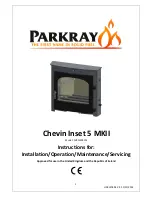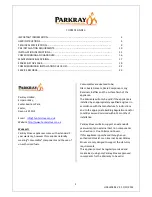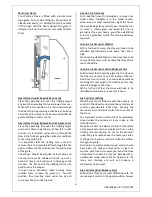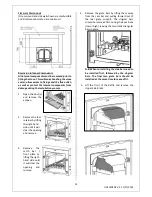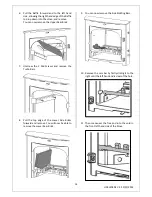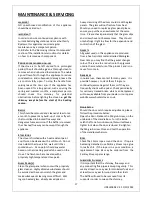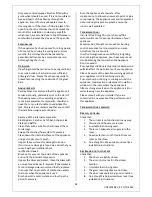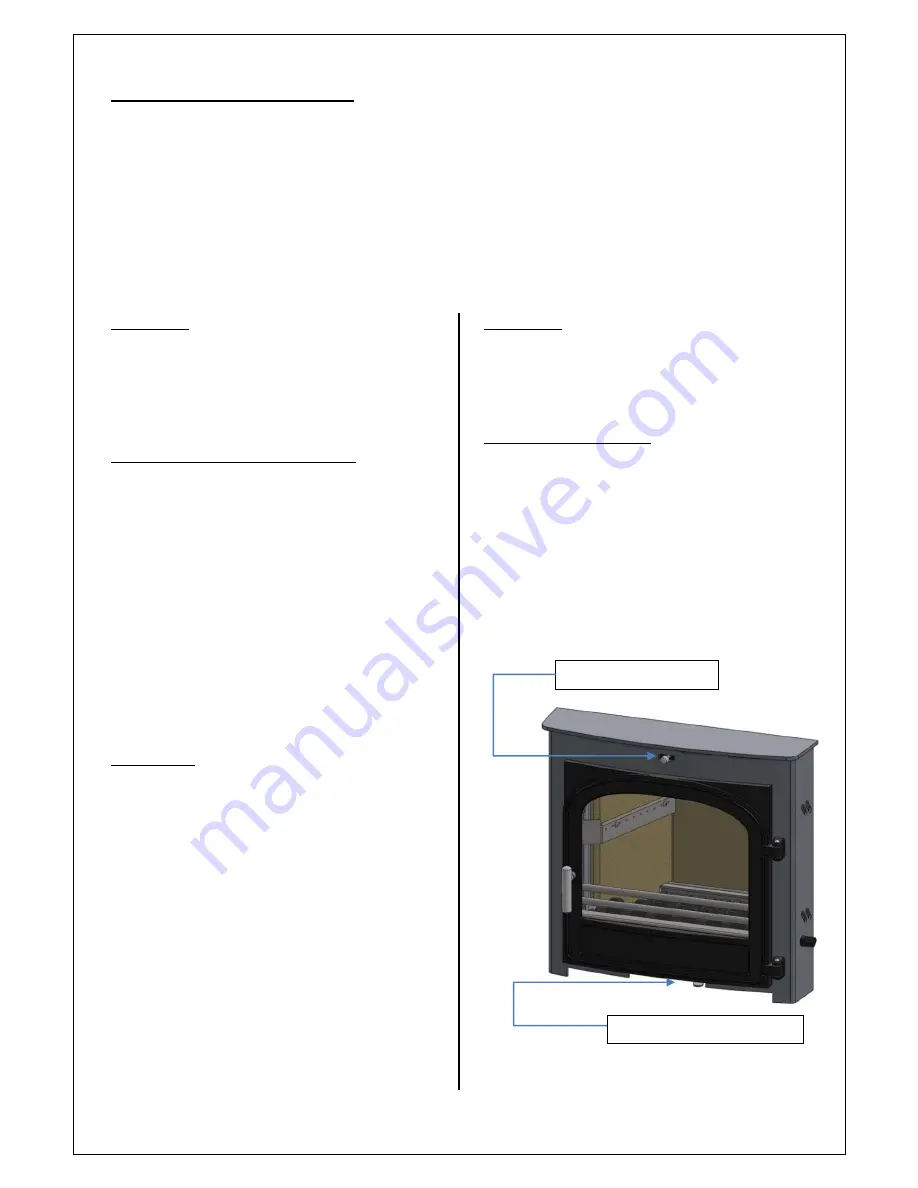
5
JINCHI05 REV E. 11/11/2014
USER INSTRUCTIONS
Please Read the ‘General Guidance’ Section at the start of these instructions before operating your stove for
the first time.
Allow sufficient clearance between the stove and pictures, plasma screen televisions or ornaments etc., as
these could be damaged and could potentially create a fire hazard (For more information read the ‘Material
Clearance’ section of these installation instructions).
WARNING – This appliance will be hot when in operation and due care should be taken. The supplied
operating tool may be used to open the door and operate the air controls.
P
LEASE
N
OTE
Your Building Insurance Company may require you
to inform you inform them of this new installation
and that the work has been carried out correctly.
Please check your policy to ensure that it is still
valid when this installation is complete.
U
SING THE
A
PPLIANCE FOR THE FIRST TIME
We recommend that the appliance is left for 24
hours after installation to allow the fire cement,
fixing glues, etc. to cure.
We also recommend that you have two or three
small fires before you operate your stove to its
maximum heat output. This is to allow the paint to
cure in steadily and to give a long service life of the
paint finish.
During this curing in process you may notice an
unpleasant smell. It is non-toxic, but for your
comfort we would suggest that during this period
you leave all doors and windows open.
A
IR CONTROLS
This stove has been designed to burn cleaner and
more efficiently than a conventional wood burning
stove. If used correctly this stove will burn far more
efficiently than normal, with the obvious notable
feature of CLEAN GLASS.
However, for this product to work properly it must
be used correctly. It is essential that the stove has
an adequate air supply for combustion and
ventilation. The primary and secondary air inlets
must be kept clear from obstruction and blockage
P
RIMARY
A
IR
The slider at the bottom of the stove controls the
primary air. This provides a conventional air
draught to the bed of the fire. The control is open
when the slider is fully to the right.
S
ECONDARY
&
T
ERTIARY
A
IR
Secondary air is controlled via the slider above the
doors; it is this “Airwash” that keeps a clean and
uninterrupted view of the fire. The control is open
when pushed towards the right of the Stove.
Tertiary air is fixed and enters the stove through
the holes on the side of the firebox. It aids in good
secondary combustion and reduces emissions into
the chimney and environment.
Secondary Air Control
Primary Air Control
Summary of Contents for Chevin Inset 5 MKII
Page 24: ...24 JINCHI05 REV E 11 11 2014 ...

